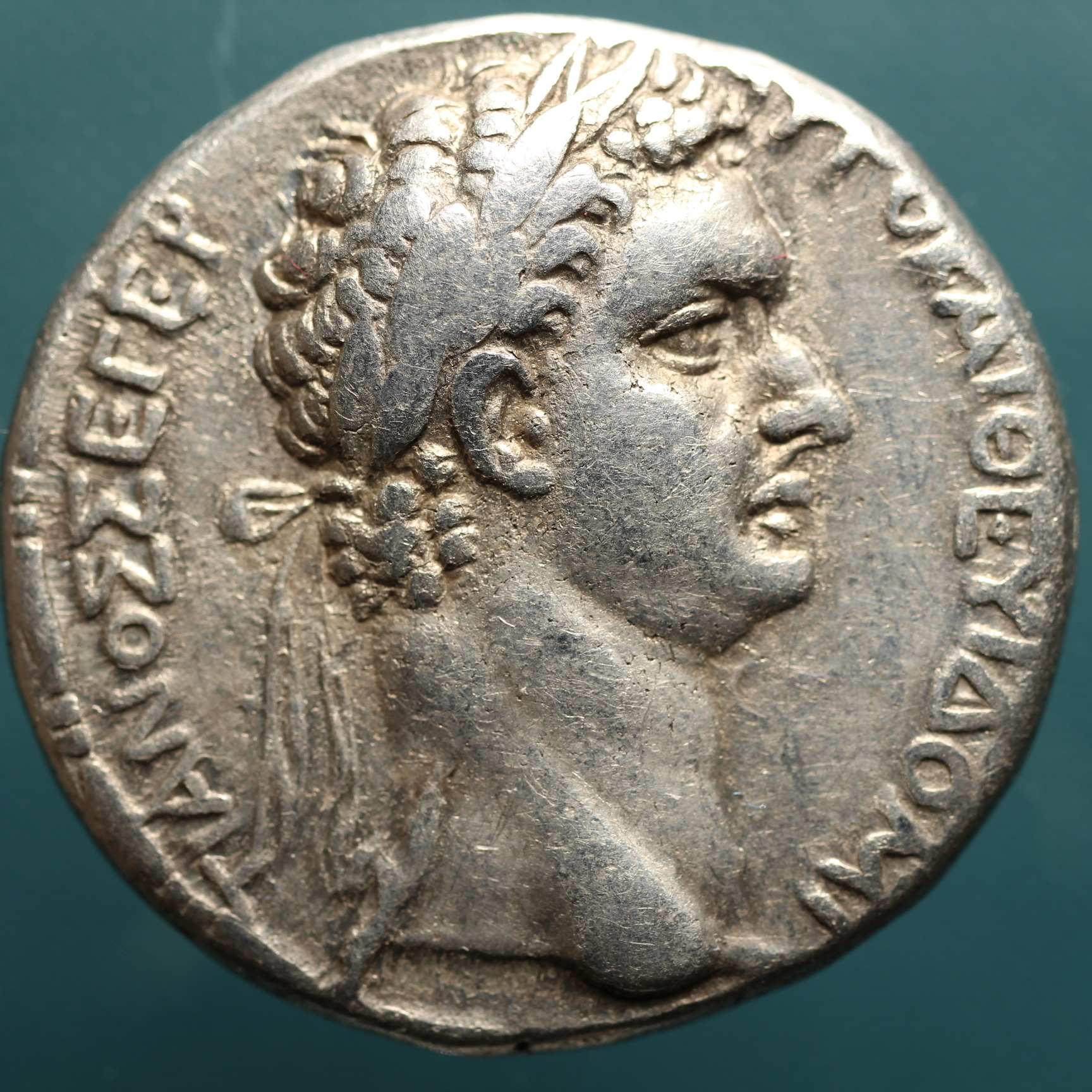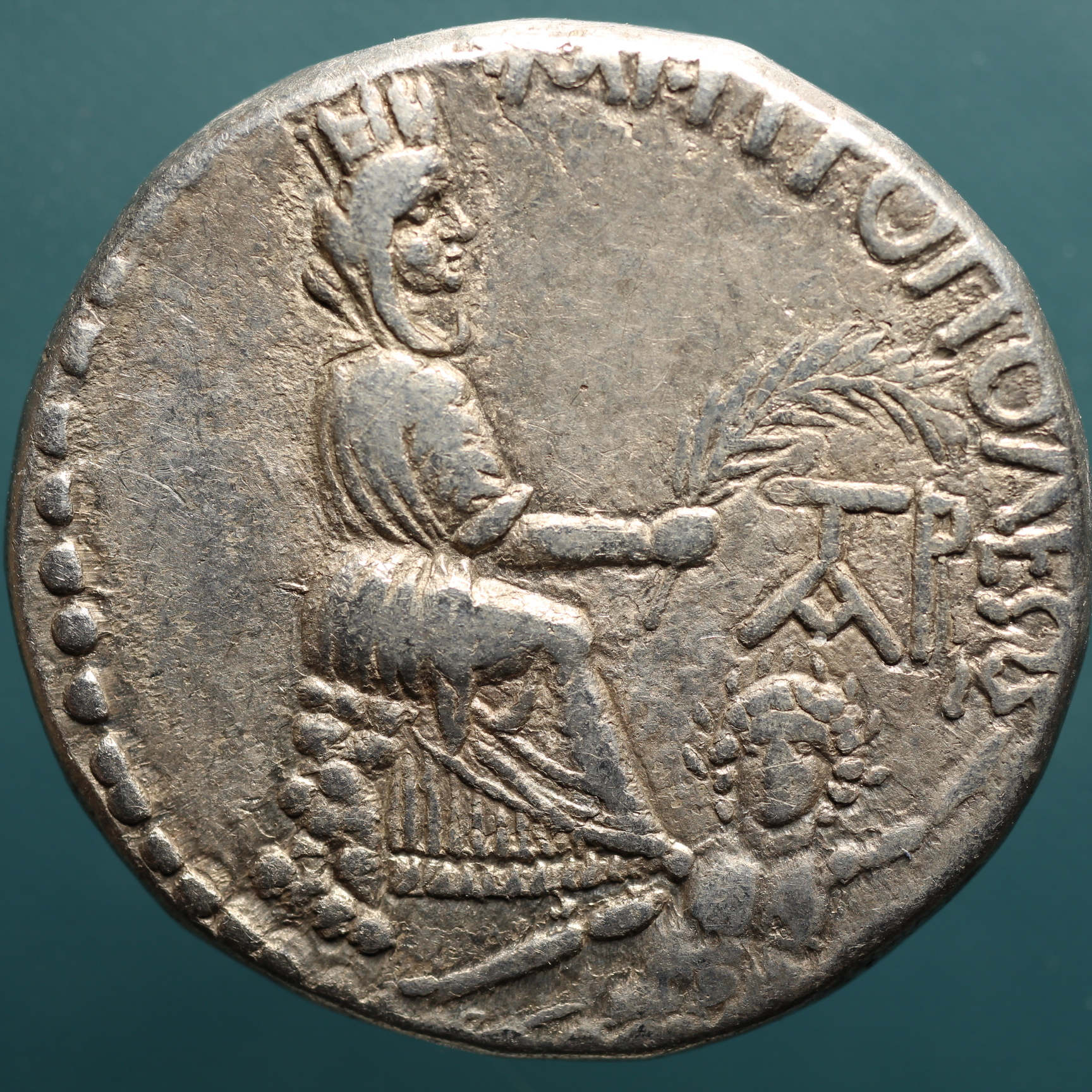Ἢ τίς γυνὴ δραχμὰς ἔχουσα δέκα ἐὰν ἀπολέσῃ δραχμὴν μίαν, οὐχὶ ἅπτει λύχνον καὶ σαροῖ τὴν οἰκίαν καὶ ζητεῖ ἐπιμελῶς ἕυς οὗ εὔρῃ; καὶ εὑροῦσα συγκαλεῖ τὰς φίλας καὶ γείτονας λέγουσα, Συγχάρητέ μοι, ὅτι εῦρον τὴν δραχμὴν ἣν ἀπώλεσα. οὕτως, λέγω ὑμῖν, γίνεται χαρὰ ἐνώπιον τῶν ἀγγέλων τοῦ θεοῦ ἐπὶ ἑνὶ ἁμαρτωλῷ μετανοοῦντι.
Or what woman, having ten drachmas, if she loses one drachma, doesn't light a lamp and sweep the house and carefully search until she finds it? And, having found the coin, she assembles her friends and neighbors, saying, "Rejoice with me, for I have found the drachma that I lost!" And so I say to you, there will be joy in the eyes of the angels of God over any sinner repenting.
Luke 15:8-10
 ACK IN THE DARK AGES, 2003 or 2005 or thereabouts, I began selling off my collection of ancient coins on eBay, some Parthian, some Republican silver, the odd Greek coin, but mostly Twelve Caesars stuff, heavy in Flavian (minus Titus). Most of it I don't miss and wouldn't even remember what I had if it weren't for the occasional scribbled pencil note in the appropriate reference catalog (none of which I sold). What I did miss, and did sorely note the lack of in my current collection, were three coins of Domitian, a sestertius (RIC 280), a cistophoric tetradrachm (RPC 874), and the tetradrachm from Tarsus (RPC 1727).
ACK IN THE DARK AGES, 2003 or 2005 or thereabouts, I began selling off my collection of ancient coins on eBay, some Parthian, some Republican silver, the odd Greek coin, but mostly Twelve Caesars stuff, heavy in Flavian (minus Titus). Most of it I don't miss and wouldn't even remember what I had if it weren't for the occasional scribbled pencil note in the appropriate reference catalog (none of which I sold). What I did miss, and did sorely note the lack of in my current collection, were three coins of Domitian, a sestertius (RIC 280), a cistophoric tetradrachm (RPC 874), and the tetradrachm from Tarsus (RPC 1727).
The sestertius I replaced right away, the cistophoric 4dr I'm still looking for, though meanwhile I have added other varieties from that series to my coll., but the missing tetradrachm from Tarsus has bothered me since 2015 when I started collecting again. It didn't help that one of the factors determining my decision to pick up the white cotton glove and magnifying glass again in the first place was a blog article by Brett Telford, where he writes eloquently about his example of RPC 1727. "I had one of those and now I don't," was almost all I could think about as I read it. Such sour grapes, such sour grapes.
But now I have one again, and so I'm celebrating. Here is my coin that was lost but now is found, my new (and improved, if I may say so) RPC 1727--


Breaking with precedent I would like to discuss the reverse of this coin first. We have here depicted the city of Tarsus, and a lovely city she is, sitting on her rocky hillside, the River Cydnus swimming placidly at her feet. On her crown are the city's turreted walls, and she wafts in her hand the palm of victory, because Tarsus was a very prosperous city. (She is Tyche (Fortune), actually, the fortune of the city, and not Tarsus itself.) Tarsus was the birthplace of St Paul and his home again after his conversion on the road to Damascus, so we know that there was a thriving Jewish community there and later a Christian one as well.
The obverse shows the bust of Domitian. What's interesting here is what's buried in the inscription, ΘΕ ΥΙ, θεοῦ υἱός, son of god. The Latin, divi filius, draws a distinction between divus and deus--I have discussed this before--but the Greek doesn't. "Domitian is the son of god," the Christian residents of Tarsus must have appreciated the irony of this declaration. Paul was already dead for thirty years by the time this coin was struck, dead and in his Glory, but thanks to him the Christian residents of Tarsus weren't fooled by what's proclaimed here. They knew who the Son of God truly was and is, our living Lord and Redeemer, Jesus Christ.
There are two meanings to be drawn from the passage from Luke quoted above, the unimportant literal meaning, which I have usurped for the purpose of this column, and the important point of the parable: God's grace and merciful love is available to all of us, all of us sinners, because, though none of us are perfect in his eyes, God loves us fiercely anyway, and he will seek us until we find him. Today is an excellent day to accept his love as revealed to us in our Lord Jesus Christ, the only true Son of God, who, lo, is with us always, to the close of the age (RSV).
Next: Discovered in a Recent Bundled Auction Lot: Domitian Thessalian League AE 17-19, RPC 288

